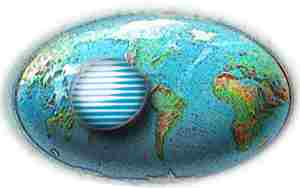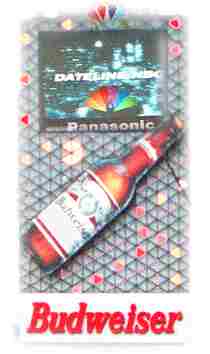.
.
Using graphics software enables plastic vision. These programs include Photoshop, Illustrator, After Effects, PageMaker, Logomotion, Bryce and Sound Edit. The user (the info worker) creates content in the form of raster, vector, 3D, audio and "dynamic"(time linked) files.The content creator uses Word for writing, PowerPoint and Acrobat for presentations and Excel for calculating numbers and plotting graphs. All applications facilitate revisions right up to the project "deadline", when the work must be delivered. They also write file formats that can be read ("pipelined") into other applications for further levels of processing.
As my bus passes through "media gulch", my plastic vision is "runtime mode". Thirteen years of manipulating media on the personal computer "desktop" has so ingrained the interface of my favorite software that I am continuosly revising and adjusting the real world media that is twirling by. Plastic vision enables my mental virtual artist's studio as I roll through Times Square.
It's like having a built in lap top computer, running my favorite software.
As I mentally revise the visuals of the Times Square ad media, I accompany it with a soundtrack suggested by the rumble, and hum of my transport, the din of people and cars, the artistry of street musicians.
In my mind's eye I try out different typefaces and layouts on billboards. I adjust the "levels" of giant photos to improve the contrast, brightness, color saturation and fidelity. I analyze the 2D and 3D animation on the jumbotrons, and improve/edit the choreography and special effects. I kern letter pairs, optimize the negative space between the letters, or change the fonts to bold or italic. I note and revise the design, color, glow and pace of the neon signs.
"I'm determined to understand what's happening"
Marshall McLuhan
Trouble & Attitude CD-Rom "digizine" QuickTime digital video file
.
.



